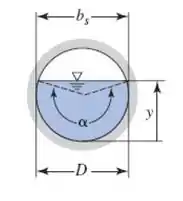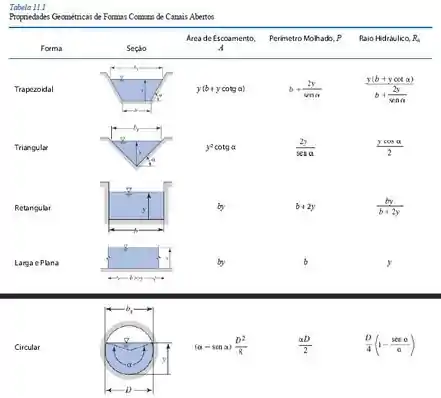Uma cuba semicircular de aço corrugado, com diâmetro , carrega água a uma profundidade . A inclinação é de 0,01. Determine a descarga.

Passo 1
Beleza! Para podermos encontrar a descarga, dada pela equação:
Precisamos encontrar todos esses parâmetros antes. Então, vamos começar com a geometria do canal, sabemos, do esquema do enunciado, que será:
Substituindo os dados conhecidos, temos:
Passo 2
Agora, com os valores dados no enunciado e o valor de , com o auxílio da tabela de geometria a seguir, conseguimos encontrar os termos que precisamos:

Então, para o nosso caso, teremos (lembrando de utilizar o ângulo em radianos):
Então, agora só falta obter o valor de , para isso, vamos recorrer a tabela a seguir:

Beleza, não temos o valor do para o aço corrugado, então, pesquisando na internet, obtemos um valor de:
Passo 3
Então, a equação para a descarga será: